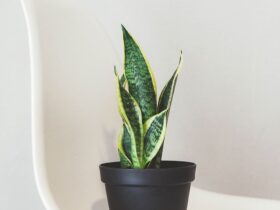Introduction to the World of How-To and DIY
In an age of instant gratification and mass-produced goods, the allure of “Do-It-Yourself” (DIY) and “How-To” projects continues to grow. It’s more than just a trend; it’s a movement that empowers individuals to create, repair, and customize their lives. Whether it’s crafting personalized home decor, fixing a leaky faucet, or mastering a new skill, DIY and How-To knowledge opens doors to creativity, resourcefulness, and self-reliance. This guide will provide you with a foundation for embarking on your own DIY adventures, covering essential skills, project ideas, safety considerations, and valuable resources.
Essential DIY Skills: A Foundation for Success
Before diving into specific projects, it’s crucial to acquire a few fundamental skills. These skills will not only make your projects easier and more enjoyable but also enhance your safety and the quality of your finished products.
Basic Tool Proficiency
Familiarize yourself with common hand tools and power tools. Here are a few essentials:
- Hand Tools: Hammer, screwdrivers (Phillips and flathead), pliers, measuring tape, level, utility knife, sandpaper, wrenches.
- Power Tools: Drill, sander, circular saw (optional but highly versatile).
Practice using these tools on scrap materials to get a feel for their operation and limitations. Watch online tutorials or attend workshops to learn proper techniques and safety precautions.
Measuring and Cutting Accurately
Precise measurements are essential for any successful DIY project. Always double-check your measurements and use a sharp cutting tool to ensure clean, accurate cuts. A speed square can greatly assist in ensuring right-angle cuts.
Fastening Techniques
Learn how to join materials securely using different fasteners, such as:
- Screws: Choose the appropriate screw size and type for the material you’re working with.
- Nails: Use the correct type of nail for the job, and learn how to drive them straight and flush.
- Adhesives: Explore different types of glue, like wood glue, epoxy, and construction adhesive, and understand their specific applications.
Basic Electrical and Plumbing Skills (with caution!)
While you can tackle minor electrical and plumbing repairs, it’s crucial to prioritize safety and know your limits. Always disconnect power or water before working on these systems, and consult a professional for complex or potentially hazardous tasks. Learn how to:
- Replace a light fixture
- Unclog a drain
- Fix a leaky faucet (simple repairs)
Important: If you are unsure, always consult with a qualified professional electrician or plumber.
Finishing Techniques
A good finish can elevate your DIY project from amateur to professional-looking. Learn basic painting, staining, and sealing techniques to protect and enhance your creations.
DIY Project Ideas to Get You Started
Now that you have a basic understanding of essential skills, let’s explore some project ideas suitable for beginners:
Home Decor
- Floating Shelves: Simple to build and add stylish storage to any room.
- Picture Frames: Create personalized frames for your favorite photos.
- Wall Art: Design unique wall art using paint, stencils, or repurposed materials.
- Repurposed Furniture: Give old furniture a new lease on life with paint, new hardware, or creative modifications.
Organization
- Storage Bins: Build custom storage bins to organize your belongings.
- Entryway Organizer: Create a dedicated space for keys, mail, and other essentials.
- Desk Organizer: Tidy up your workspace with a handmade desk organizer.
Gardening
- Raised Garden Beds: Build a raised garden bed for growing vegetables, herbs, or flowers.
- Plant Markers: Create decorative plant markers to identify your plants.
- Birdhouse: Construct a simple birdhouse to attract feathered friends to your garden.
Simple Repairs
- Replacing a Doorknob: A quick and easy way to update the look of your doors.
- Patching a Small Hole in Drywall: Learn how to repair minor drywall damage.
- Caulking Around a Tub or Sink: Prevent water damage by resealing around fixtures.
Safety First: Prioritizing a Safe DIY Experience
Safety should always be your top priority when undertaking any DIY project. Here are some essential safety tips:
- Wear Appropriate Safety Gear: Safety glasses, gloves, and hearing protection are essential for many projects.
- Read and Understand Instructions: Carefully read and follow the instructions for all tools and materials.
- Work in a Well-Ventilated Area: Especially when working with paints, adhesives, or other chemicals.
- Disconnect Power or Water: Before working on electrical or plumbing systems.
- Keep Your Work Area Clean and Organized: A cluttered workspace is a safety hazard.
- Know Your Limits: Don’t attempt projects that are beyond your skill level.
- First Aid Kit: Always keep a well-stocked first aid kit readily available.
- Fire Extinguisher: Ensure a fire extinguisher is nearby, especially when working with flammable materials.
Resources for DIY Inspiration and Guidance
The internet is a treasure trove of DIY resources. Here are some places to find inspiration, tutorials, and expert advice:
- YouTube: Search for tutorials on specific projects or skills.
- Pinterest: Browse visually appealing DIY projects and ideas.
- DIY Blogs and Websites: Many websites are dedicated to DIY projects, offering detailed instructions and tips.
- Local Workshops and Classes: Attend workshops at hardware stores, community centers, or craft studios.
- Books and Magazines: Explore DIY books and magazines for inspiration and in-depth instructions.
Conclusion
The world of DIY and How-To projects is vast and rewarding. By acquiring essential skills, exploring project ideas, prioritizing safety, and utilizing available resources, you can unlock your creative potential and become a confident and capable DIY enthusiast. Embrace the challenge, enjoy the process, and take pride in the satisfaction of creating something with your own hands. Remember to start small, learn from your mistakes, and always prioritize safety. Happy DIYing!
FAQs: Frequently Asked Questions About DIY
















Leave a Reply